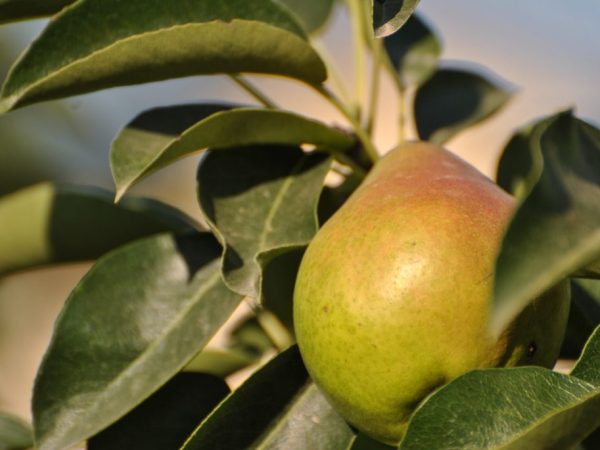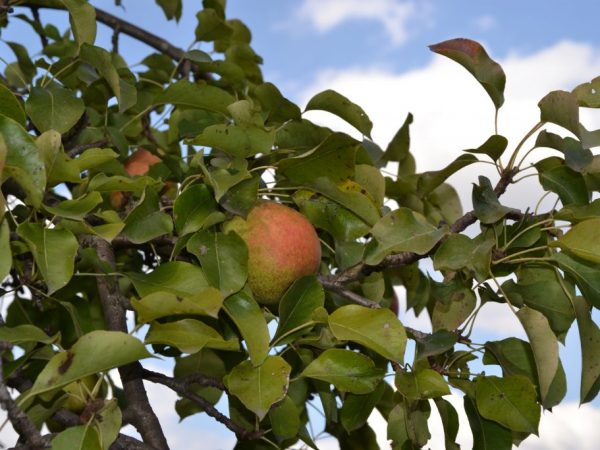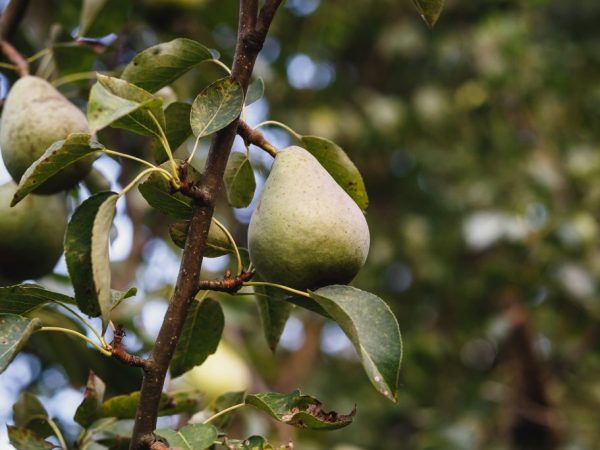Characteristics of pear varieties in Memory of Yakovlev
Breeders are constantly creating new varieties of fruit crops that are resistant to cold weather. One of these is the Yakovlev Memory Pear.

Characteristics of pear varieties in Memory of Yakovlev
In addition to weather resistance, this variety is famous for its high yield and disease resistance. In addition, it is easy and pleasant to care for such a plant.
Characteristics of the variety
Yakovlev's Memory Pear is a late variety obtained as a result of crossing the varieties of the Olivier de Serre and Tema culture. The characteristics of the parents of this variety allowed breeders from the Michurin Institute to obtain a plant that is resistant to the climatic characteristics of cultivation. Today, gardeners of different climatic zones are actively cultivating this crop.
The peculiarity of this plant lies in the high level of awakening of the buds and the active growth of shoots. Already by 3 years of age, you can get a crop of up to 25 kg per tree.
Description of the tree
According to the description, the tree has a lush spherical shape, because its branches are located at an angle of 90 °. The height of the plant rarely reaches 2 m.
The bark is gray. On young seedlings of pears in Memory of Yakovlev, it has a smooth structure. Skeletal branches are often rough, the buds are cone-shaped, smooth. The foliage is dense, dark green, with serrated edges.
The variety is of particular interest during the flowering period. In spring, beautiful white flowers appear on the branches of the tree. Their edges are even, the petals are saucer-shaped. The stigma is flush with the anthers. The culture enters the fruiting period in July.
Description of the fetus
Yakovlev's Memory Pear gives smooth fruits, the skin of which has a slight sheen in the sun.
Their size can be different. The weight of some specimens reaches 200 g. Fruits have a blunt pear-shaped shape and are distinguished by a bright yellow-pinkish tinge. The stalk reaches 4 cm.
Harvesting is done at the end of September. Up to 20 kg of ripe juicy fruits are obtained from one tree. The stalk is firmly attached to the tree, and pears can hang on it for a long time without losing their presentation and taste.
Special attention should be paid to the description of the taste characteristics of the pear in Memory of Yakovlev. The fruit is very juicy and sweet. There is a honey flavor, due to the high sugar content and a large amount of useful elements contained in the composition.
The pulp is creamy in color. At the skin, it is tender and soft, and closer to the seeds, a slight granularity is felt.
The use of the Yakovlev memory pear is universal. The fruits tolerate transportation well and are subject to long-term storage, which makes them suitable for sale.
Growing features

The tree does not need pollination
Yakovlev's Memory Pear actively grows and bears fruit when the right growing conditions are organized. It is best to buy a seedling in specialized fruit nurseries.
The soil should be fertile and well fertilized. No pollinators are needed: the tree is self-fertile. Planting is done in spring.
Site preparation
The planting site should be flat. The proximity of groundwater is prohibited. The site should be well lit by sunlight.
The pear variety in Memory of Yakovlev will take to a new place faster, provided that fertilizers have been introduced into the soil in advance. A week before planting, you need to:
- Dig a hole 1 m deep and 0.8 m in diameter on the site.
- In the harvested soil, fertilize with humus (2.5 buckets), potassium sulfate (2 tbsp. L.) And superphosphate (4 tbsp. L.). Top dressing is applied with sand (1.5-2 buckets).
- Fertilizer is mixed with soil and watered with a solution of wood ash.
Planting a tree
A young tree is planted immediately after purchase: the culture does not like transplanting and does not tolerate transportation well.
Planting pears in memory of Yakovlev is carried out a week after fertilization. This is done as follows:
- A peg is driven into the center of the dug hole. It should be 10-15 cm higher than a young tree.
- A plant is placed in a hole, after having straightened its roots.
- Sprinkle the roots with earth so that the root collar is 5-6 cm above the soil level.
After planting, the plant should be watered with warm, settled water. Volume - 18-20 liters of water. The soil is mulched to protect it from moisture evaporation. For these purposes, peat with a layer of 4-5 cm is suitable.
Care

The pear is easy to care for
According to the description, the Yakovlev memory pear is undemanding to care for. She doesn't need pollinators. In addition, she herself is able to pollinate other plants. The most suitable neighbors for her are Augustovskaya pear and Lada.
The variety is different:
- Moisture-loving. Heavy, regular watering is required, especially when grown in hot climates. The volume of water is 20-30 liters. Watering frequency depends on air temperature and rainfall. The average frequency of the procedure is 1-2 times every 10 days.
- The need for correct pruning in order to form a crown of the correct shape. Pruning is carried out with the onset of spring. Remove old dry branches, as well as those that have an incorrect location. The gardener's task is to give the shoots a horizontal shape.
- The need for seasonal fertilization. In the spring - nitrogen fertilizers, in the summer - potash, and in the fall, at the end of the growing season, phosphorus-containing compounds.
Caring for this pear differs little from caring for other fruit crops. The only difference is the need to cover the tree. Some gardeners carry out this procedure with water, which they water the plant with before frosting. The bole, covered with a layer of ice, tolerates winter better. The procedure is especially necessary for young plants. They can also be covered with snow or foam rubber fixed with tape or women's tights can be used.
Gardeners looking to propagate a crop need to use vegetative methods. It is best to choose a branch on a tree, cut it off and plant it in a box with fertile soil. Rooting takes a long time. The transplant of a seedling is started only after 1.5-2 years. Gardeners recommend speeding up this process with the use of Kornevin or Epin.
Diseases and pests
Despite the good immunity to diseases and pests, it is still necessary to apply preventive spraying with fungicides. Specialized preparations will protect the tree from possible problems and will guarantee a high-quality large harvest in the fall.
Spraying with a solution of Bordeaux liquid (3%) can also be used against diseases. During the flowering period, Strobi and Inta-Vir preparations will be a good stimulant for fruiting.
Advantages and disadvantages of the variety
The main advantage of the Pamyat Yakovleva variety is frost resistance. The culture tolerates frosts down to -35 ° C. It is because of this that it is actively grown in the Urals and even in Siberia. The variety also has other advantages, including:
- excellent yield with modest growth rates;
- self-fertility;
- resistance to diseases and pests;
- high awakening buds and early fruiting;
- excellent taste of fruits, as well as their suitability for long-term storage and transportation.
There are also disadvantages, among which the most prominent is the moisture-loving nature of the plant. It is not drought tolerant and requires regular watering. Also, the disadvantages of the Yakovlev memory pear include thickened cells in the pulp of the fruits and the difference in fruit weight.
Conclusion
Yakovlev's Memory Pear is a late variety that is popular in regions with cold climatic conditions. Despite the compact size of the tree, up to 20 kg of delicious juicy fruits are harvested from it.
To grow pears in Memory of Yakovlev on your site, you need to take into account some agrotechnical features. A well-lit plain is the best place for such a tree. The grower must provide the crop with abundant regular watering, proper pruning and fertilization.


